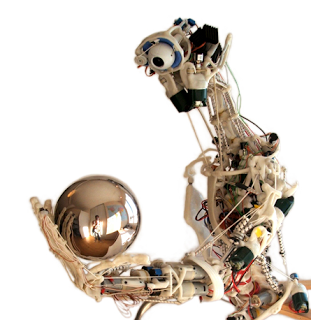Today, simulating a single neuron requires the full power of a laptop computer. But the brain has billions of neurons and simulating all them simultaneously is a huge challenge. To get round this problem, the project will develop novel techniques of multi-level simulation in which only groups of neurons that are highly active are simulated in detail. But even in this way, simulating the complete human brain will require a computer a thousand times more powerful than the most powerful machine available today. This means that some of the key players in the Human Brain Project will be specialists in supercomputing. Their task: to work with industry to provide the project with the computing power it will need at each stage of its work.
The Human Brain Project has been officially selected as one of the finalists for the EU’s FET Flagship Program. The goal of the project, proposed by a Consortium of European Universities, is to create a simulation of the human brain – an achievement that promises to revolutionize not only neuroscience, medicine and the social sciences – but also information technology and robotics.
This May 4, in Budapest, the EU officially selected the Human Brain Project as one of six finalists who will compete for funding under its new FET Flagship Program. The program could provide the winners with up to a billion euros of funding for at least ten years of research.
The principle goal of the Human Brain Project is to build a European research facility that will simulate the human brain and exploit the results. The thirteen universities, research institutes and hospitals leading the project will each be responsible for one specific research niche, coordinating the activities of hundreds of other universities and hospitals in Europe and around the world
Jülich, a partner in the project, will host the main supercomputing centre. In the project, Jülich will work with industry to design and set up the necessary infrastructure. In the later stages this work researchers on the project will have access to a computer a thousand times more powerful than the most powerful computers existing today.
The Human Brain Project will impact many different areas of society. Brain simulation will provide new insights into the basic causes of neurological diseases such as autism, depression, Parkinson’s, and Alzheimer’s. It will give us new ways of testing drugs and understanding the way they work. It will provide a test platform for new drugs that directly target the causes of disease and that have fewer side effects than current treatments. It will allow us to design prosthetic devices to help people with disabilities. The benefits are potentially huge. As world populations grow older, more than a third will be affected by some kind of brain disease. Brain simulation provides us with a powerful new strategy to tackle the problem.
The project also promises to become a source of new Information Technologies. Unlike the computers of today, the brain has the ability to repair itself, to take decisions, to learn, and to think creatively – all while consuming no more energy than an electric light bulb. The Human Brain Project will bring these capabilities to a new generation of neuromorphic computing devices, with circuitry directly derived from the circuitry of the brain. The new devices will help us to build a new generation of genuinely intelligent robots to help us at work and in our daily lives.
The Human Brain Project builds on the work of the Blue Brain Project. Led by Henry Markram of the Ecole Polytechnique Fédérale de Lausanne (EPFL), the Blue Brain Project has already taken an essential first towards simulation of the complete brain. Over the last six years, the project has developed a prototype facility with the tools, know-how and supercomputing technology necessary to build brain models, potentially of any species at any stage in its development. As a proof of concept, the project has successfully built the first ever, detailed model of the neocortical column, one of the brain’s basic building blocks.
If you liked this article, please give it a quick review on ycombinator or StumbleUpon. Thanks

Brian Wang is a Futurist Thought Leader and a popular Science blogger with 1 million readers per month. His blog Nextbigfuture.com is ranked #1 Science News Blog. It covers many disruptive technology and trends including Space, Robotics, Artificial Intelligence, Medicine, Anti-aging Biotechnology, and Nanotechnology.
Known for identifying cutting edge technologies, he is currently a Co-Founder of a startup and fundraiser for high potential early-stage companies. He is the Head of Research for Allocations for deep technology investments and an Angel Investor at Space Angels.
A frequent speaker at corporations, he has been a TEDx speaker, a Singularity University speaker and guest at numerous interviews for radio and podcasts. He is open to public speaking and advising engagements.


